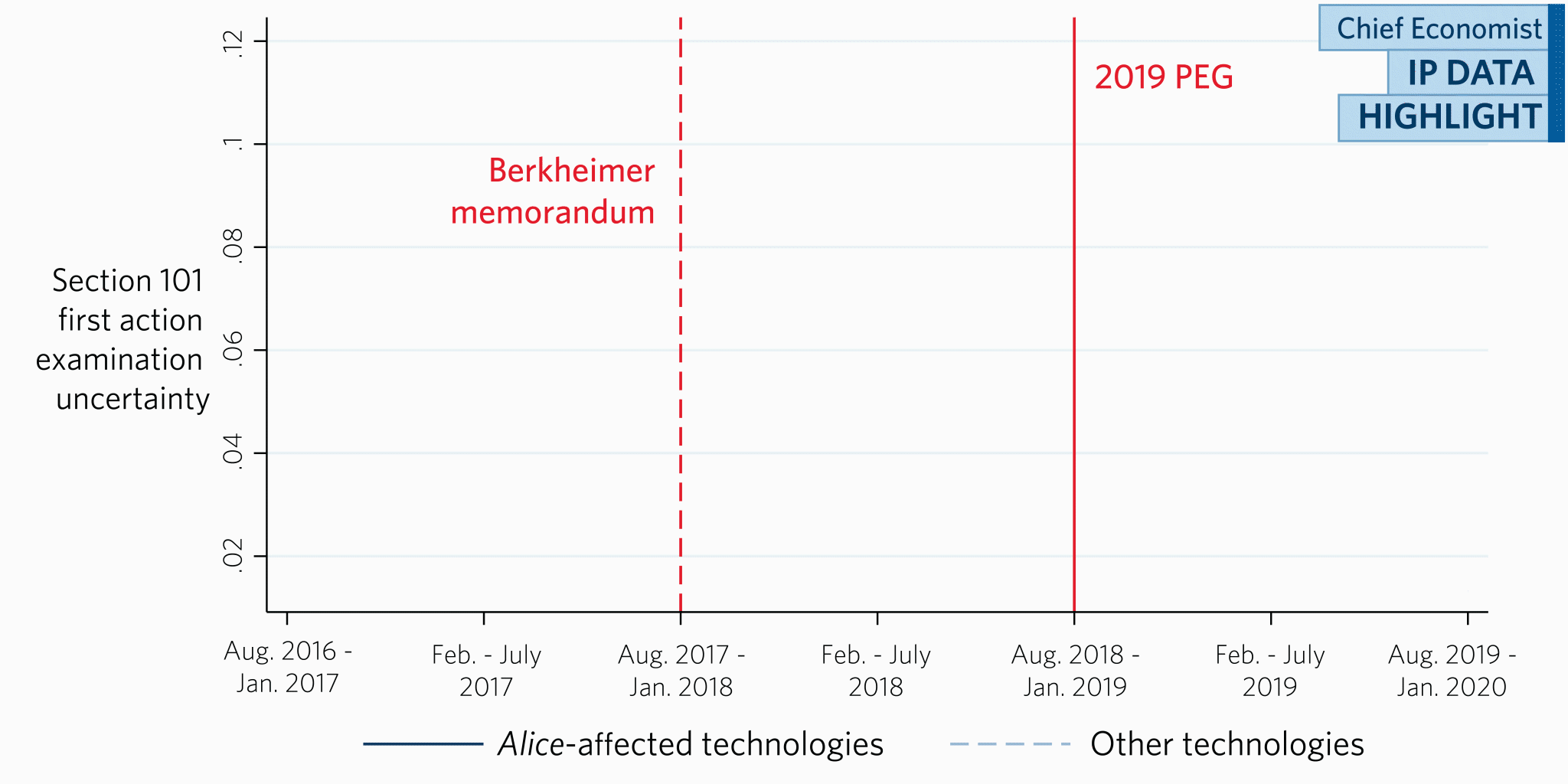
USPTO Chief Economist’s office just released its report on patent examination outcomes after the Supreme Court’s Alice decision.
The authors found that in the 18 months following the U.S. Supreme Court decision in Alice Corp. v. CLS Bank. The rejection for patent-ineligible subject matter jumped by 31%.
This increase had a significant negative operational impact on the concerned industry and the USPTO. Both allocating resource and money that didn’t create any value.
To address this, the patent office released in 2019 a “Revised Patent Subject Matter Eligibility Guidance” document. This document aimed at clarifying the new state of patent eligibility in a post-Alice world. Its primary goal was to address the uncertainty and rejection rate of the patent process for specific subject matters. The effect was almost immediate, with a decrease in the rejection rate by 25%.
However, it is not clear if the effect of the Section 101 Eligibility Guidelines will percolate up to the Federal Circuit and Supreme Court. Without these two institution supporting those efforts it is not clear if these result will translate in the court systems.
Read the complete USPTO study.
April 24, 2020